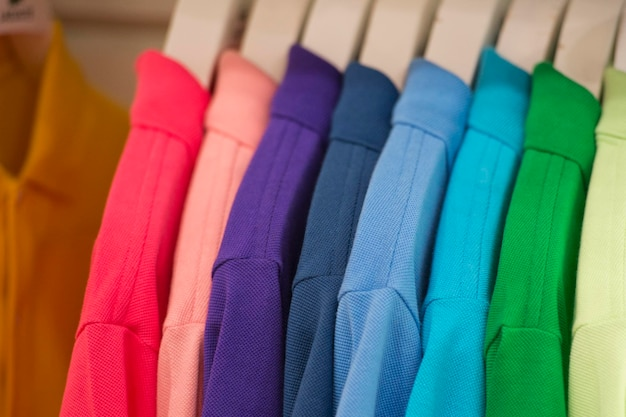Comprehensive Guide to Designing Your Corporate Uniforms Key Considerations for Success
Corporate uniforms aren't just clothing—they're a very effective method of advertising your company, unifying your employees, and adding safety and practicality to the work environment. A well-designed uniform can enhance professionalism, customer confidence, and employee sense of belonging. Yet a poorly executed design can have the opposite effect, as Delta Air Lines discovered when its "Passport Plum" uniforms—which were initially praised as innovative—sparked complaints of skin rashes and chemical burns, leading to lawsuits and negative publicity in 2019. Preventing that kind of mishap and creating uniforms that actually perform their function takes some thoughtful planning. This guide pulls together all of the important factors—from brand identity to safety requirements—into one comprehensive resource to allow you to develop corporate uniforms that shine in every respect.
Understanding the Purpose and Context of Your Uniforms
Before you dive into design, consider why your uniforms are being utilized and where they'll be utilized. Uniforms are a tangible expression of your company, reaffirming your identity and building team spirit, say experts from a variety of industries. They also convey a uniform, professional image that clients know and trust. Yet purpose differs according to context. High-visibility clothing in construction guarantees that workers are visible to machine operators, whereas in the healthcare sector, uniforms need to survive repeated high-temperature washing for hygiene. The work your staff do is important as well—lawyers dress up for a reason, just as staff who work outside require flexible material for ease of movement. Start by assessing your industry and job functions to align your uniform range with both branding goals and practical needs.
Choosing the Right Materials for Comfort and Safety

Your fabric choice can make or break your uniforms. Comfort is non-negotiable—fabrics need to be breathable, stretchy, and soft to keep employees happy and productive all day. Consider high-quality materials that won't wrinkle much, wash well, and won't fade, particularly for bold colors that are part of your brand. Durability is also important. Uniforms undergo daily wear, tear, and washing, so choose durable ones that will last, minimizing replacement costs and environmental footprint. Ease of maintenance is also important—machine-washable and low-iron materials save your team time.
Safety is another factor. Flame-retardant material in high-risk settings protects against sparks, and moisture-wicking fabric keeps workers cool in the heat. Delta's experience with "toxic" fabrics that irritated workers' skin is a cautionary tale—test extensively to avoid discomfort or medical problems. Your selections should balance comfort, durability, and safety, depending on your team's work.
Reflecting Your Brand Identity Through Design
Your uniforms are a walking billboard for your brand, so they must reflect your company's values, culture, and visual identity. Be consistent—extend your brand's color palette, logo, and typography to everything, including signage and employee attire. An inconsistency, like pairing a purple logo with red shirts, confuses customers and dilutes recognition. Experts suggest coming up with staple items—jackets for outdoor teams or name badges for client-facing staff—to be the foundation of your design. The possibilities for customization are limitless: colored trims, zip pullers, buttons, embroidery, heat printing, or badges will bring your concept to life. Keep it simple, and less is more for that sleek, professional look that promotes trust and familiarity with your clientele.
Prioritizing Employee Comfort, Fit, and Involvement

Your employees wear them daily, so fit and comfort are imperative. Offer a range of sizes and adjustable features—like stretch fabric or bespoke cuts—to fit different body types and allow for ease of movement. Ill-fitting or tight uniforms look unkempt, are uncomfortable, and may hinder performance. Check size charts and consider alterations if the standard options fall short—ordering a "unisex medium" for all won't cut it.
Get your team involved. They know their jobs best and can identify practical needs, like avoiding short sleeves if the wearer is modest. Brainstorm, sketch ideas, and try wearer trials on a sample of employees—different genders, types of jobs, and levels of seniority—to catch issues early. Delta could have bypassed its fiasco by soliciting feedback sooner. But don't overdo it—too many opinions prolong decisions, so select a small group to represent the team. Input ensures uniforms boost morale, not drain it.
Enhancing Safety and Functionality
Safety is not a choice for most industries, and uniforms play a critical role. Reflective tapes and patches are lifesavers in low-visibility situations like roadwork or construction, making staff visible in poor light. Ergonomics matter too—design uniforms that promote dexterity and mobility, not restrict it. Think outside the garment: pockets or attachment points for respirators, goggles, gloves, or hard hats keep protective gear at hand. Compliance with standards, like AS/NZS 4602.1 for high-visibility specifications, is a must—check your industry's standards to stay legal and safe.
Functionality carries over to weather. Summer is suitable for lightweight, breathable choices, and warm, rugged layers for winter. Test designs to see that they can withstand your environment, be it chemicals, heat, or repetitive washing. A uniform that deteriorates under pressure jeopardizes both safety and professionalism.
Personalizing Your Uniforms for Impact
Personalization can give your uniforms an extra oomph. A logo is standard fare, but stitch on names or badges to make customers connect with workers at a glance. Prominent call-to-action messages—"Can I assist you?" or "I'm here to provide the answers!" on tops—spark conversation and signal service readiness. Pilot these adjustments first and see how well they work before adopting them.
Balancing Budget and Long-Term Value
A budget drives every decision, from startups to business behemoths like Delta. Be efficient with expenses, not just upfront but ultimately too—complex designs or multi-logo branding adds to the expense. Good-quality materials and proper construction save long-term expenses with fewer repairs or replacements. In situations where speed is critical, turn to supplier inventory for quick turnarounds rather than waiting for special orders.
Plan ahead: a consistent redesign can take years , so choose a style your employees and brand can grow up with.Work with suppliers to meet your goals without exceeding budget, making every dollar count.
Putting It All Together: Steps to Success
Designing corporate uniforms is a promise that ties together brand identity, employee comfort, safety, and functionality in a tidy package. Start with your purpose—industry needs and functions—then choose materials that are comfortable, durable, and protective. Weave your brand with consistent, quality-focused design, and involve employees to get fit and function right. Make safety a priority with visibility, accessories, and compliance, then inject personal touches for impact. Top it all off with a prudent budget and hard testing.
Don't rush—order samples, try trials, and tweak to feedback to avoid costly errors. Your employees are your brand ambassadors, and their uniforms shape the impression the world gets of you. Let's make it happen. Ready to get started? Contact Kutesmart today—our expert team specializes in high-quality, custom uniforms that elevate your brand and meet your every need.

.png)








